Coastal Eutrophication -- Investigation of Oyster Aquaculture Solutions for Mitigating Nutrient Loading
Little Pond Pilot Study
A major environmental concern in many seaside communities is eutrophication, a process in which excess nutrients (often nitrogen) enter coastal waters and cause rapid growth of algae and plankton that negatively impacts sea grass beds, leads to low oxygen conditions, and throws off natural ecosystem balances in ways that harm fish and shellfish stocks. Oyster farming can help to mitigate this problem by (1) sequestering nutrients in shellfish tissue that is removed from the ecosystem when the shellfish are harvested, and (2) by possibly stimulating microbial metabolic processes in sediments under the oysters that remove nitrogen. Denitrification is one of those microbial processes which may be stimulated below oyster cages, and the contribution of this process to nitrogen removal is poorly understood. Using an oyster farm in Little Pond, Falmouth, Massachusetts, as a test site, we are providing the data and metrics that fishing community advocates can use to articulate the full value, including ecosystem restoration effects, of expanded shellfish production to coastal communities. Communities around Cape Cod face particularly severe challenges from eutrophication, and the need to meet State and Federal regulatory compliance standards for water quality in coastal ponds and estuaries. Data we collected on sediment denitrification rates in a pilot project was used to inform models of the ecological benefits derived from nitrogen removal by oysters. We aim to use our multi-year data to incorporate sediment denitrification rates and other data on microbial activities into existing models of the economics of shellfish aquaculture, which presently include only benefits from harvesting shellfish tissue (along with the value of resulting oyster sales).
Waquoit Bay NOAA Study
From 2018 we have been working on a study in Waquoit Bay where we are comparing the nitrogen reduction outcomes for three of the most popular commercial aquaculture growing technologies. We have set up a test site in upper Waquoit Bay along the shoreline at Waquoit Bay National Estuarine Research Reserve where we are growing 1- and 2-year old oysters using three growing methods: surface floating bags, midwater Oyster Gro cages, and bottom cages. In our preliminary work in 2016 and 2017 we observed that denitrification rates appear to be different below oyster aquaculture sites employing different technologies. Since there are many factors that can impact the activities of microbial communities in marine sediments under oysters (temperature, hydrodynamic regime, water depth, sediment characteristics, salinity, etc.) different methods had to be compared at a site where each test site could be nearly identical to the others. This project involves students from Stonehill College under the direction of Dr. Daniel Rogers, and students and a postdoc at WHOI, as well as numerous volunteers involved in helping to set up the test sites and assisting with field work every other week.
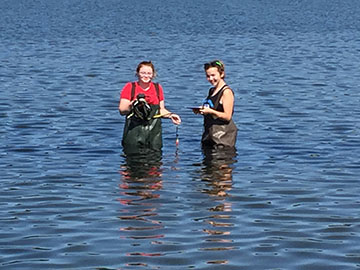
S. Lott and B. Cox at Little Pond.
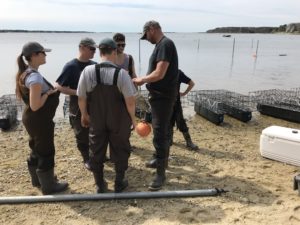
Shellfish Constable Martinsen with students at Waquoit Bay test site 2018
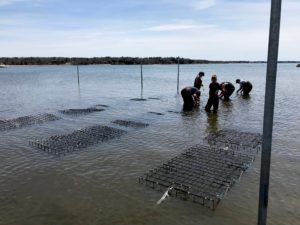
Setting up bottom cages at Waquoit Bay test site 2018
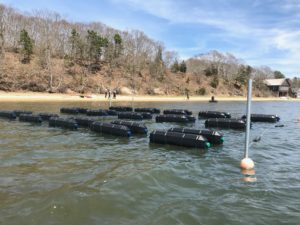
Oyster Gro midwater cages at Waquoit Bay test site 2018
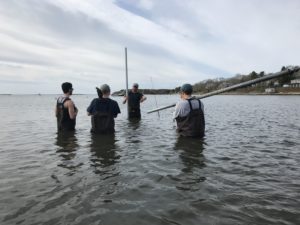
setting corner posts at Waquoit Bay test site 2018
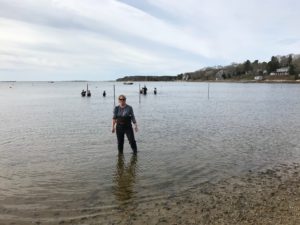
V. Edgcomb at Waquoit Bay test sit 2018
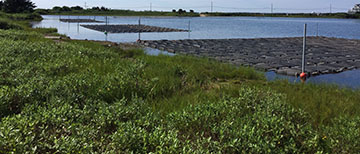
Little Pond 2017